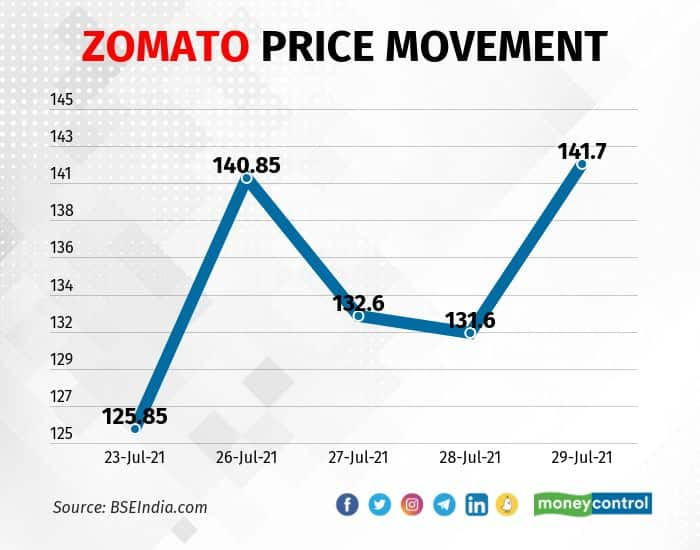
“While the rate hike is a given, with international crude oil prices remaining steady, inflation stabilising, albeit at still reasonably elevated levels, and Indian retail investors continuing their participation in the equity market, we believe that the breadth of the market can improve,” Harshad Patil, Executive Vice President and Chief Investments Officer of TATA AIA Life Insurance, says in an interview to Moneycontrol.
Also, the Indian economy, despite the global recessionary trends, would be among the fastest-growing large global economies next year, and consequently remain one of the key beneficiaries of global fund allocation, he believes.
Also Read | As inflation loses sting and equities sell off, what should investors do?
With an experience of over 20 years in areas such as fund management, research and dealing functions, Patil says given the current domestic and global market conditions and the expectation of an increase in government capex in the backdrop of the national elections in 2024, they feel that infrastructure and financials could do well in the next year.
With easing inflation concerns, are we completely out of the woods for 2023?
While inflation has eased a tad in the US and Europe from multi-decade highs, it remains elevated as compared to its historical averages. It may take many more months for this above trend inflation to normalise to the comfort zone of the global central banks. So we are not entirely out of the woods. That said, inflation in India has seen a meaningful decline over the last few months and is now within the RBI’s tolerance range. This makes us believe that the inflationary pressures in India have begun to ease and should continue to do so in early 2023 as well.
Do you think oil prices will get back above $ 100 a barrel in the coming weeks, especially after the reopening of the Chinese economy?
As the Chinese economy opens and its economic activity resumes momentum, there is a likelihood of an increase in commodity prices, including crude oil. However, the global recessionary trends are likely to keep the oil demand in check. Moreover, if there is a de-escalation of the geopolitical tensions in Eastern Europe, it would further help in cooling down oil prices. The stance of OPEC in calibrating oil production would also be crucial in determining the price levels.
Do you expect more consolidation in the cement space in the coming year?
The cement sector has seen consolidation over the last few years, and it is likely to continue as the cement majors look to augment their existing assets. However, the southern markets have a large number of fragmented assets in the cement sector, where consolidation is rather difficult.
Do you expect IT space to see September 2022 lows in 2023 given the expected global slowdown?
We do see sustained pressures in IT sector revenue growth, given the global slowdown and the expectations of a dip in global deals for Indian IT companies. However, as a large part of the impact of the slowdown is already factored in the stock prices, we do not foresee a significant fall.
Are equity markets least bothered about rate hikes now?
Equity markets tend to factor in all the available macro information. While the rate hike is a given, with international crude oil prices remaining steady, inflation stabilising, albeit at still reasonably elevated levels, and Indian retail investors continuing their participation in the equity market, we believe that the breadth of the market can improve. Also, the Indian economy, despite the global recessionary trends, would be among the fastest-growing large global economies next year and consequently remain one of the key beneficiaries of global fund allocation.
What are the chances of Asian currencies getting back into turmoil against the dollar again in 2023?
With the US Federal Reserve determined to keep the terminal rates at elevated levels and adopt a ‘higher for longer’ interest rate regime, there would be ample support for the USD and that usually means increased pressure on the Asian currencies. That said, turmoil for Asian currencies is unlikely as the Fed has clearly communicated its policy rate stance.
Any themes you want to suggest as we enter 2023?
We at Tata AIA Life believe in fundamental analysis and predominantly look at a bottom-up stock-picking approach for our funds. However, given the current domestic and global market conditions and the expectation of an increase in government capex in the backdrop of the national elections in 2024, we feel that infrastructure and financials could do well in the next year. Interestingly, these sectors are also a tad below their average medium-term earnings multiples, thus offering good opportunities.
What is your investment strategy behind Emerging Opportunity Fund and why do you think it is more important in the current market environment?
The Emerging Opportunity Fund is predominantly a mid-cap fund with ample flexibility for the fund manager to invest in the large-cap or small-cap category depending upon business cycles, market opportunity and relative valuations. Though the fund retains a mid-cap bias, it has the flexibility of investing up to 30 percent in either small-cap or large-cap stocks. We have noted that at various points in time, large caps have significantly outperformed small caps and vice versa.

